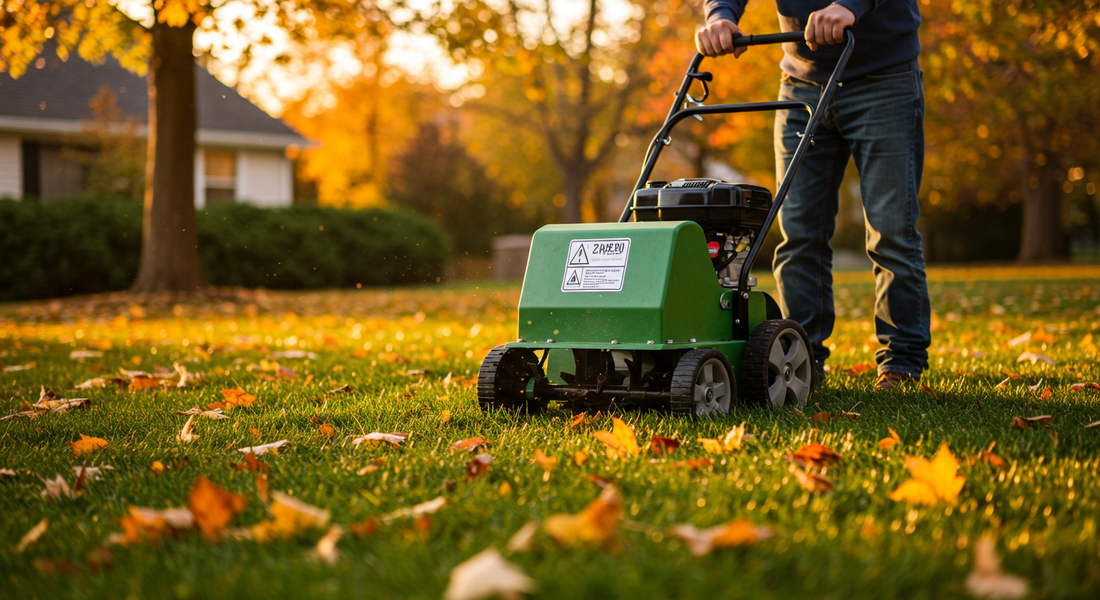
The Ultimate Fall Yard Cleanup Checklist: 10 Steps to Prepare for Winter
Share
As the crisp autumn air arrives and the vibrant colors of fall begin to fade, it's tempting to hang up the gardening gloves and head inside for the season. However, the secret to a lush, beautiful spring yard is a thorough fall cleanup.
The work you put in now is arguably the most important gardening task of the year, setting the stage for healthy soil, strong roots, and a vibrant return of life after the winter thaw. This comprehensive fall yard cleanup checklist will guide you through the 10 essential steps to tuck your yard in for a long winter's nap and ensure it wakes up beautiful in the spring.
Lawn Care for Autumn
Your autumn lawn care strategy is all about healing summer damage and preparing the grass for a dormant period.
-
Step 1: Continue Mowing and Raking Leaves: Don't put the mower away just yet. Continue to mow as needed, gradually lowering the blade for the final two cuts of the season. It’s also crucial to rake leaves regularly. A thick layer of wet leaves can suffocate the grass, block sunlight, and promote fungal diseases.
-
Step 2: Aerate and Overseed: After a summer of foot traffic, the soil can become compacted. Aerating—pulling up small plugs of soil—allows water, oxygen, and nutrients to reach the grassroots more easily. Fall is the perfect time to do this, followed by overseeding to fill in any bare patches and ensure a thicker, more resilient lawn next year.
-
Step 3: Apply a Winterizer Fertilizer: Feed your lawn one last time before winter. A "winterizer" fertilizer is high in potassium, which helps the grass withstand cold temperatures and promotes strong root growth, giving it a head start for the spring.

Garden Bed Preparation
How you prepare garden for winter will have a huge impact on the health of your plants and soil.
-
Step 4: Remove Spent Annuals and Vegetables: Once they've finished for the season, pull out old annual flowers and vegetable plants. Leaving them to rot can harbor pests and diseases that will happily overwinter in your garden soil.
-
Step 5: Cut Back Perennials: After the first hard frost, cut back most of your herbaceous perennials to about 3-6 inches above the ground. This tidies up the garden and prevents pests from making a home in the dead foliage.
-
Step 6: Plant Spring-Blooming Bulbs: Want to see beautiful tulips, daffodils, and crocuses as soon as the snow melts? Fall is the time to plant them. It’s a simple act of hope that pays off wonderfully in the spring.
-
Step 7: Add a Layer of Mulch for Insulation: Once the ground has cooled, apply a 2-3 inch layer of mulch (like shredded leaves or bark) over your garden beds. This helps to insulate the soil, protect plant roots from freeze-thaw cycles, and retain moisture.

General Yard Maintenance
The final steps involve a general tidying up to winterize garden and yard equipment.
-
Step 8: Clean and Store Patio Furniture and Tools: Give your garden tools a good cleaning, sharpen any blades, and apply a light coat of oil to prevent rust. Clean off patio furniture and store it in a shed or garage to protect it from harsh winter weather.
-
Step 9: Winterize Your Irrigation System: If you have an in-ground sprinkler system, it's crucial to blow out the lines with an air compressor to prevent any remaining water from freezing and cracking the pipes.
-
Step 10: Final Gutter Cleaning: After most of the leaves have fallen from the trees, give your gutters one last thorough cleaning to prevent ice dams and ensure proper drainage during winter melts.
